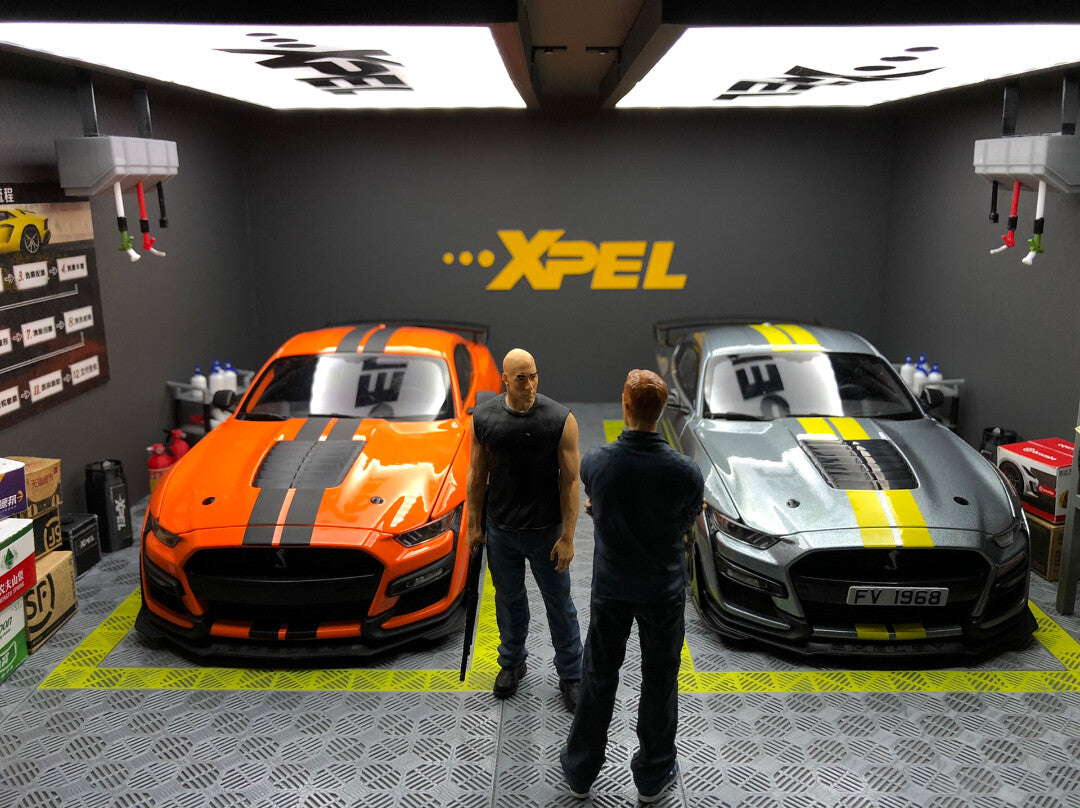
Start building your very own miniature garage today!
Share
Creating the Perfect Display Space for Car Model Collections: Designing and Arranging a Miniature Garage
As car model collecting becomes an increasingly popular hobby, collectors often ponder how to showcase their models in a way that highlights their charm and personal sentiment. An ideal display space not only reflects the collector’s personality but also breathes life into the models through a well-thought-out scene. Designing a miniature garage-style display space is an excellent way to achieve both practicality and artistic appeal.
1. The Concept and Significance of a Miniature Garage
A miniature garage is a display method that simulates a real parking scene, allowing car models to be presented as if they were actual vehicles. This design approach not only makes the display more vivid but also conveys a deep sense of automotive culture, showcasing the collector’s unique taste.
In a miniature garage, each model car has its own "dedicated parking spot," complemented by iconic elements such as parking lines, traffic signs, tool cabinets, and even oil drums and repair equipment, creating a miniature world that mirrors reality.

2. Steps to Design a Miniature Garage
(1) Planning the Display Space
- Space Size: Choose an appropriate display area based on your collection’s scale. It can be a corner of a study, a wall, or an entire dedicated room.
- Layered Design: Use multi-tiered display racks to simulate parking levels. Each tier can hold several model cars while keeping them clearly visible.
(2) Adding Realistic Elements
- Parking Lot Signs: Draw parking lines, add numbered spots, and directional arrows.
- Background Decoration: Use high-resolution printed parking lot backdrops or construct miniature garage walls for realism.
- Detail Props: Include small props like toolboxes, fuel pumps, and repair stations to enhance interactivity.
(3) Lighting and Display Cabinets
- Lighting Effects: Choose dual-tone lighting (warm and cool) to simulate day and night effects or add small spotlights to highlight model details.
- Display Cabinet Material: Transparent glass doors not only keep dust away but also allow a clear view of the models. High-transparency acrylic is highly recommended.
3. Creative Ideas to Enhance the Display Experience
- Dynamic Scene Recreation: Simulate scenes like car repairs, refueling, or vehicles entering and exiting the garage by using movable props to create changing scenarios.
- Collection Stories: Attach small tags to each model car with details about the make, brand, and the story behind the collection, giving visitors a deeper appreciation of these unique pieces.
- Themed Garages: Divide display areas based on car types (e.g., sports cars, classic vintage cars, off-road vehicles) to highlight different collection themes.

4. Case Study: A Stunning Miniature Garage Display
A seasoned car model collector transformed his study into a miniature garage. The display rack was designed as a three-level parking structure, with each level showcasing classic cars from different eras. The floor featured mini parking lines, and the background wall displayed printed images of garage roller doors, paired with retro-style wall lights to create a nostalgic atmosphere. He also crafted a rotating display platform to showcase the "star model of the month," which became a highlight during gatherings with friends.
5. Conclusion
Car model collecting is an art, and a miniature garage-style display space provides a vivid stage for this art form. Through thoughtful design and arrangement, your collection can truly shine while creating a space rich in automotive culture and personal sentiment. If you’re passionate about car models, start building your very own miniature garage today!
